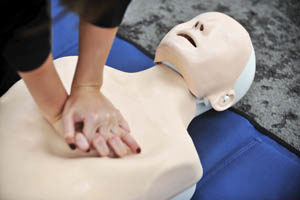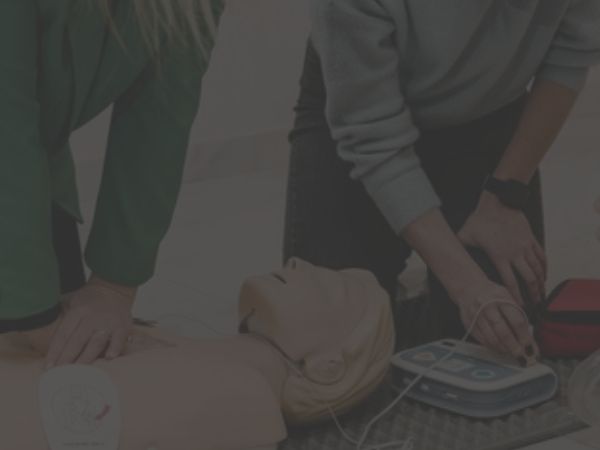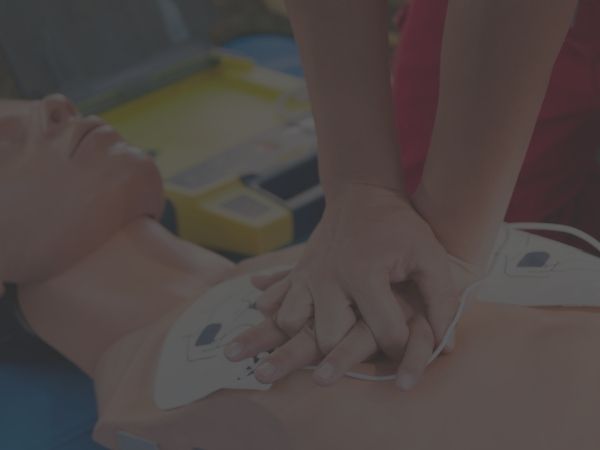Your cart is currently empty!
Did You Know CPR Certifications May Lower Insurance Premiums?
Americans spend $1,503 annually for car insurance, reports Business Insider, and as a country, America spends more annually on health care insurance, topping $2.7 trillion annually, than any other country, says Keith Lerner via CNBC. Although these statistics paint a life-long expense for families of all sizes, people can take steps to keep insurance premiums down, including obtaining BLS and CPR certifications. Such a concept may not make sense. If an insurance underwriter calculates premiums based on risk, how can becoming CPR certified make a difference? The answer lies in understanding how CPR and other life-saving skills training courses reduce overall risk and improve a person’s skill set, like planning for parenthood, in several key ways.
Impact of the Burden of Health Care on Insurance
The $2.7 trillion economic impact of health care is significant, reports the Centers for Disease Control and Prevention (CDC), and forces costs to skyrocket for those at higher risk of illness, accident or injury. These factors contribute to the information insurance underwriters use in determining a person’s risk in calculating insurance premiums. As nationwide health care costs increase, companies increase average premium and re-evaluate risk assessments to stay profitable.
The rise in premiums coincides with increased use of applicable benefits, regardless of insurance type.
For example, someone with a history of multiple traffic citations or moving vehicle accidents will pay a higher premium for insurance. Applied to nationwide statistics, such actions increase the risk of the general population. In response, insurance companies increase premiums, contributing to a higher burden upon the economy, including increasing the burden of health care, every day living expenses and more.
Completing a CPR course does more than just prepare a person to help another; it acts a means of building trust among employees. As explained by The New York Times, conducting CPR and First Aid courses in financial firms has been shown to increase trust, build working relationships and reduce stress among employees.
These benefits extend across a company, allowing employees to work together more often, reduce differences and find ways to better serve customers. Furthermore, businesses have a vested interest in keeping their overhead expenses, including insurance for employees, lower.
Employees that have previously completed or are in the process of completing CPR training reduce the risk of severe injury and death among peers and customers. Therefore, these companies can hire more CPR certified individuals to keep liability and business insurance costs in check.
In today’s economy, finding the right career can be a challenge, and even after completing years of work in college, getting hired is another challenge. However, people can use CPR training courses to enhance their resumes and increase their candidacy for employment. Since employers want responsible team members, demonstrating a willingness to provide life-saving support to others by completing a certification course can mean the difference between moving on to the next interview and never getting a return phone call.
When it comes time to apply, employers may be more interested in candidates with a proven track record of safety and compliance with workplace rules. Even careers not requiring CPR certification may take additional training skills into consideration before making a hiring decision. Ergo, individuals with CPR skills and certification may improve their hiring odds.
While the likelihood of administering CPR in a non-health care environment is minimal, the physical activity of completing the certification course, renewing it and performing it once every other month can amount to a near-loss of one pound over the course of a year. It may not seem like much, but even small improvements can have a dramatic impact on a person’s health.
An individual with life-saving skills training is less likely to engage in risk activities that could result in severe accident or injury. As a result, the insurance underwriter assesses a lower level of risk, requiring lower insurance premiums. However, the potential life insurance benefits do not end at a person’s own insurance policy.
Consider a purchased insurance policy for an elderly parent or family member. If a CPR certified child lives with or provides care for the family member, the family member’s life insurance rates may decrease. This is the result of a lower chance of death should cardiac arrest occur. Since the family caregiver is CPR certified, he may perform CPR to increase the elder person’s chance of survival.
It is important to note that although a person in the care of family may have a signed DO NOT RESUSCITATE (DNR) order, the potential effect on lowering premiums may still occur. It depends on the unique policy stipulations for each underwriter.
Becoming Certified in CPR May Lower Auto Insurance Premiums
Completing a CPR training course can also have the effect of lower auto insurance premiums. People who complete CPR training understand the risks inherent in day-to-day activities. Even activities that people take for granted, like driving to and from work, are seen in a different light after learning how to perform CPR.
If an accident occurs, someone with an appropriate certification can provide immediate life-saving help to the victims of a crash or other accident. This effectively increases chance of survival for drivers. In turn, the insurance underwriter may see fewer claims resulting from the death or severe bodily injury of a driver or passenger.
Being CPR Certified May Increase Eligibility for Additional Insurance Discounts
Depending on the insurance underwriter, people who work in careers requiring CPR and BLS certification may also be able to take advantage of additional discounts on their premiums. For example, hospitals and health care organizations may have partnered with auto insurers to offer discounts to medical employees.
Discounts may also apply for daycare providers, school teachers, sports coaches and other recreational careers that often require the supervision of others.
If an employee of a career requiring CPR and life-saving certification does sign up for auto insurance with a partnering company, the underwriter may also offer additional insurance types, like life, home, long-term and disability insurance. Combining policies through the same insurer may further increase the overall discount, reducing insurance premiums.
 CPR and Other Certifications May Be Required for Employment
CPR and Other Certifications May Be Required for Employment
Although similar to the point on improving applicant candidacy, careers requiring CPR certified employees can also have the effect of lower non-auto insurance premiums in another way.
The lowest-cost means of purchasing health insurance, long-term care insurance, accidental death and injury insurance, and short-term and long-term disability insurance lies in getting an employer to pay for the bulk of the cost. This is the basic premise behind employer-paid benefits.
Careers requiring certifications for employment, like working in a health care facility, have a pre-existing stipulation for taking advantage of the employer-paid benefits. Employees must have completed a CPR training program. As a result, qualifying for employer-paid benefits has the net effect of lowering insurance premiums for an individual.
While these benefits may be available to employees, like health insurance, they may have stringent enrollment windows, except for new hires. Existing employees may not be able to take advantage of employer-paid benefits until the enrollment window returns, which is typically at the end of the calendar year or around August. Of course, the fiscal year is set by each company. Thus, the enrollment will vary and depend on the specific structure of each employer.
Although employees may have other insurance policies in effect, simply having a job can reduce total cost of living expenses by reducing the amount paid to insurance underwriters. In addition, having a job with these benefits equates to being financially stable in the event of an emergency, accident or injury.
Taking a Few Other Steps Can Reduce Premiums Too
A comprehensive discussion on the effect of CPR training on insurance premiums is incomplete without considering other potential steps to lower premiums. Individuals who have already completed CPR training should use the following best practices to ensure their premiums reflect their skills, risk profile and history:
- Always ask if a discount is available for CPR certified policy holders or covered parties. This is especially important when purchasing an insurance policy in an insurance agent’s office. The agent may simply overlook the possible discount for CPR certified policy holders. Asking ensures the agent reviews available discounts and applies them to the policy. Even if your career is not in health care, ask about discounts available for your unique career choice and job role.
- Stay active, and maintain a healthy weight. Physical activity has been shown to significantly improve health and life expectancy, key factors used in determining insurance premiums related to health care costs, personal injuries, and end of life care or expenses. As explained by CDC.gov, 75 minutes of vigorous-intensity activity per week can help a person maintain weight over time. Since being overweight is associated with a higher risk of chronic illness, maintaining weight reduces your risk profile. Also, maintaining a healthy weight is key to reducing stress at work.
- Determine if additional training or safety courses may reduce premiums. Depending on your state of residence, additional training and safety courses, like defensive driving, may reduce auto premiums even further. Make it a point to review other courses you may take to reduce premiums with your insurance agent or underwriter for all insurance policies.
- Avoid purchasing the first policy you see. Unless enrolling in employer-paid benefits, which may be limited to certain policy types and coverages, research multiple policies before making a final selection. Even when reviewing available types of insurance through employers, check to make sure the quality of such benefits is cost-effective. Although rarely lower than employer-paid benefits, you may qualify for lower insurance premiums through outside agencies or marketplaces.
- Avoid risky behaviors. Risky behaviors can range from driving after a long shift at work to an occasional evening of drinking a bit too much. By definition, risky behaviors increase risk of injury or adverse effects in life. Because of risky behaviors, insurance premiums may increase. Avoiding risky behaviors may not always be possible, but by knowing their potential impact on premiums, a person is less likely to partake.
Take Advantage of the Premium-Benefits of CPR Certification Now
Life is filled with hardship, including financial difficulties, but becoming CPR certified is an oft-overlooked way of lower insurance premiums. While these benefits can be stark, the greatest benefit will always be the ability to save another person’s life. Take care of your fellow man, and take advantage of lower premiums and other key benefits by signing up for your life-saving skills course now. Also, join the conversation by sharing this post to Twitter, Facebook, and LinkedIn today.
Keep Reading
3 responses
I had no idea that knowing CPR could qualify you for discounts on insurance. I have always wanted to learn CPR just in case I need to save a loved one, so this is even more of an incentive to do so. I’ll have to see if my current insurance provider offers discounts.
Something I didn’t realize was that CPR training can act as a trust builder for employees. Maybe that is something that my boss should have us all do to build trust. That is something I would want to do to build trust in the office if I were the boss.










Stating the apparent has by no means been so eloquent.